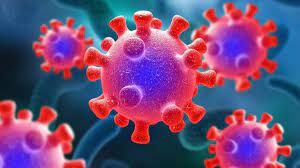Emerging Threat: The FLiRT Variant
The Centers for Disease Control and Prevention (CDC) have identified a new set of COVID-19 variants spreading rapidly across the United States, detected through wastewater surveillance. Termed “FLiRT” after their mutations, these variants have swiftly become the dominant strains nationwide.
Variant Overview
KP.2: A Dominant Strain
From April 14 to April 27, the KP.2 variant accounted for a staggering 25% of all current COVID-19 cases in the U.S. This variant has supplanted the previous predominant strain, JN.1, marking a significant shift in the epidemiological landscape.
KP1.1: Another Circulating Variant
Additionally, the KP1.1 FLiRT variant is responsible for approximately 7.5% of COVID-19 cases in the U.S., as reported by the CDC. Both KP.2 and KP1.1 variants exhibit heightened transmissibility, posing significant challenges to containment efforts.
Expert Insights
Vaccine and Immunity Challenges
According to experts cited by Today, existing vaccines and immunity acquired from prior COVID-19 infection offer only partial protection against the KP.2 and KP1.1 variants. This underscores the urgent need for continued vigilance and adaptation in public health strategies.
Expected Viral Evolution
The CDC emphasizes that viral mutations and the emergence of new variants are expected occurrences. Viruses, including SARS-CoV-2, constantly evolve through mutation, which may confer advantages such as increased transmissibility or resistance to treatments and vaccines.
Concerning Features of FLiRT
Megan L. Ranney, dean of the Yale School of Public Health, highlights concerning attributes of the FLiRT variants. Notably, FLiRT has the capacity to induce changes in the spike protein, a key factor in facilitating COVID-19 infection and illness progression.
Implications and Outlook
As FLiRT variants continue to proliferate, the trajectory of the COVID-19 pandemic remains dynamic and unpredictable. Heightened surveillance, robust vaccination campaigns, and flexible public health responses are essential in mitigating the impact of emerging variants and curbing transmission.




